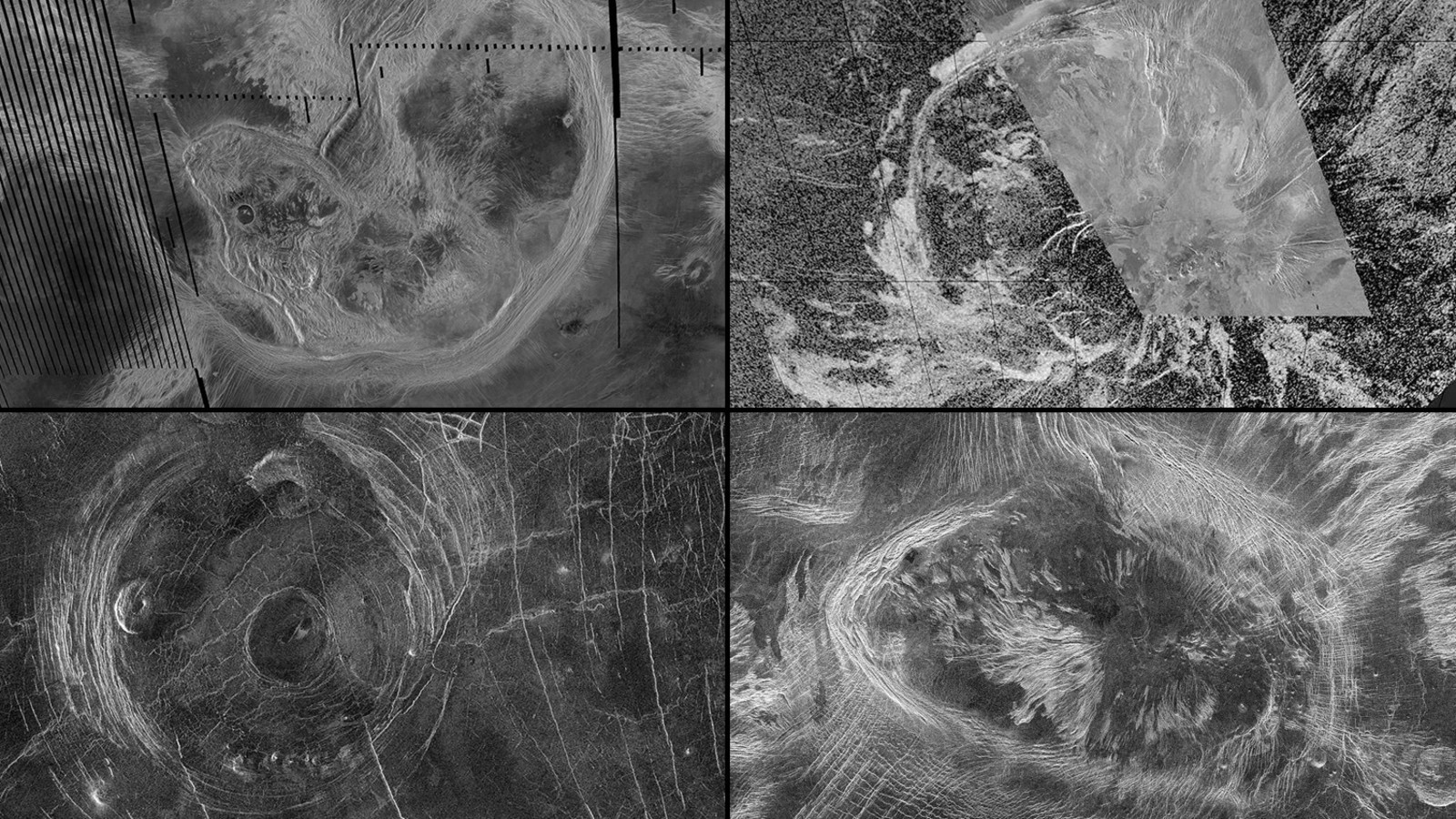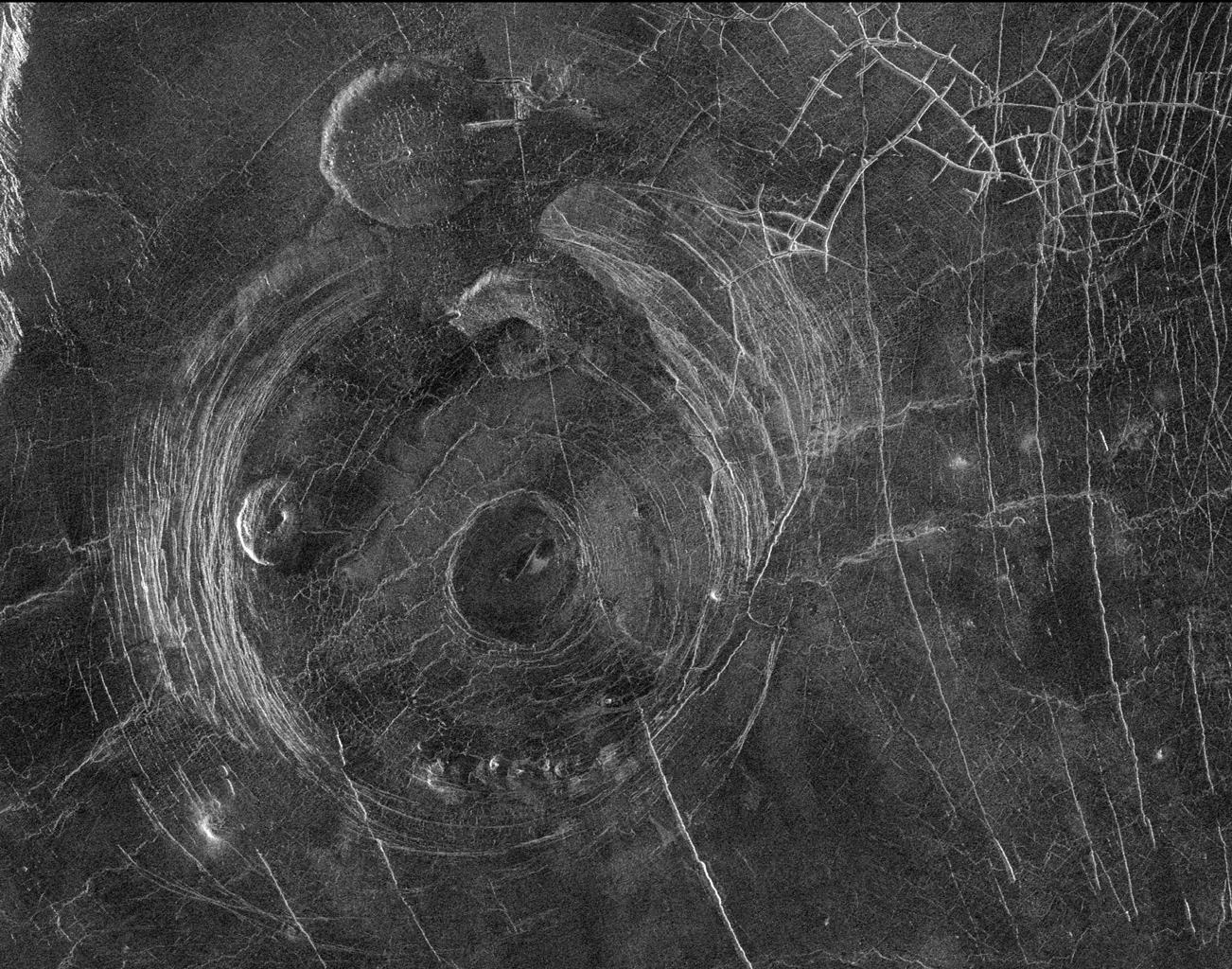Curious circles on Venus suggest its surface is still changing
Out of 75 coronae examined, 52 showed signs of these underground forces still at work, hinting that tectonic activity may be more widespread on Venus than previously thought.

A new study reveals overlooked signs of geological activity on Venus — clues that the planet's mysterious surface is still changing today. These signs, found in giant circular features called "coronae," may not only reshape our understanding of Venus, but also offer a glimpse into Earth's own ancient past.
Coronae are vast, oval-shaped structures ranging in size from dozens to hundreds of miles wide. They are believed to form when hot, plumes from deep inside a planet push against its outer shell called the lithosphere. Imagine a slow-motion bubble of molten rock pressing upward beneath the surface, warping and cracking the crust above.
These dramatic geological features, encircled by rings of fractures, are scattered across Venus, offering a stunning window into the planet's inner workings, scientists say. "They are very large features, and people have proposed different theories over the years as to how they formed," said coauthor Anna Gülcher, a planetary scientist at the University of Bern in Switzerland, in a NASA/JPL statement. "The most exciting thing for our study is that we can now say there are most likely various and ongoing active processes driving their formation."
These massive ovals once dotted our planet's landscape, so studying them on Venus can reveal much about both planets, scientists say.
"Coronae are not found on Earth today; however, they may have existed when our planet was young and before plate tectonics had been established," said the study's lead author, Gael Cascioli, assistant research scientist at the University of Maryland, Baltimore County, and NASA's Goddard Space Flight Center in Greenbelt, Maryland in the statement.
"By combining gravity and topography data, this research has provided a new and important insight into the possible subsurface processes currently shaping the surface of Venus."

To figure out the most likely process behind the formation of coronae on Venus, the team built a 3D computer model that simulates the flow of hot material inside the planet — like a virtual experiment of the planet's inner workings. They tested different formation scenarios and compared their results with gravity and topography data collected by NASA's Magellan spacecraft, which mapped Venus in the early 1990s.
Breaking space news, the latest updates on rocket launches, skywatching events and more!
The gravity data, which measured the strength of gravity at different points along the planet's surface, turned out to be a game-changer. This is because denser material pulls more strongly on nearby objects, while less dense material exerts a weaker pull. The data helped the scientists detect hidden plumes of hot, less dense material rising from deep inside Venus, something that surface maps alone couldn't reveal.

Out of 75 coronae examined, 52 showed signs of these underground forces still at work, hinting that tectonic activity may be more widespread on Venus than previously thought.
The team believes that several tectonic processes may be shaping Venus's surface around the coronae. In some cases, subduction-like activity — a process where one part of a planet's outer shell is forced downward into the hotter, deeper interior — occurs as hot plumes rise and push surface material outward and downward. This is similar to how tectonic plates interact on Earth.
They also say that another process called lithospheric dripping, which involves cooler, heavier parts of the surface sinking into the hotter mantle below, could be responsible for the tectonic activity underlying the coronae. A third possibility is that plumes beneath thicker crust trigger volcanic activity above.
Whatever the cause of the coronae might be, they suggest that Venus may be geologically active in complex and varied ways, giving researchers insight into how tectonics might work on planets without Earth-like plate boundaries — and possibly how Earth looked in its earlier, more dynamic past.
While a significant and extensive study, the team relied on old data, and higher resolution images captured by the upcoming VERITAS mission will help them clarify their results.
"The VERITAS gravity maps of Venus will boost the resolution by at least a factor of two to four, depending on location — a level of detail that could revolutionize our understanding of Venus' geology and implications for early Earth," said study coauthor Suzanne Smrekar, a planetary scientist at JPL and principal investigator for VERITAS, in JPL's statement. VERITAS is set to launch in 2031.
A study of coronae on Venus was published in the journal Science Advances.

A chemist turned science writer, Victoria Corless completed her Ph.D. in organic synthesis at the University of Toronto and, ever the cliché, realized lab work was not something she wanted to do for the rest of her days. After dabbling in science writing and a brief stint as a medical writer, Victoria joined Wiley’s Advanced Science News where she works as an editor and writer. On the side, she freelances for various outlets, including Research2Reality and Chemistry World.
You must confirm your public display name before commenting
Please logout and then login again, you will then be prompted to enter your display name.
